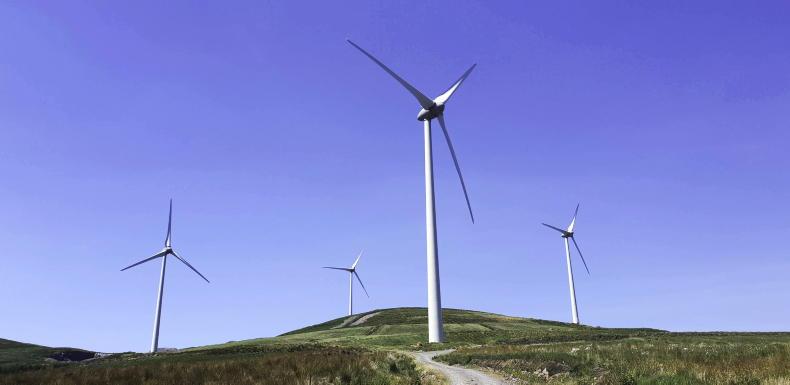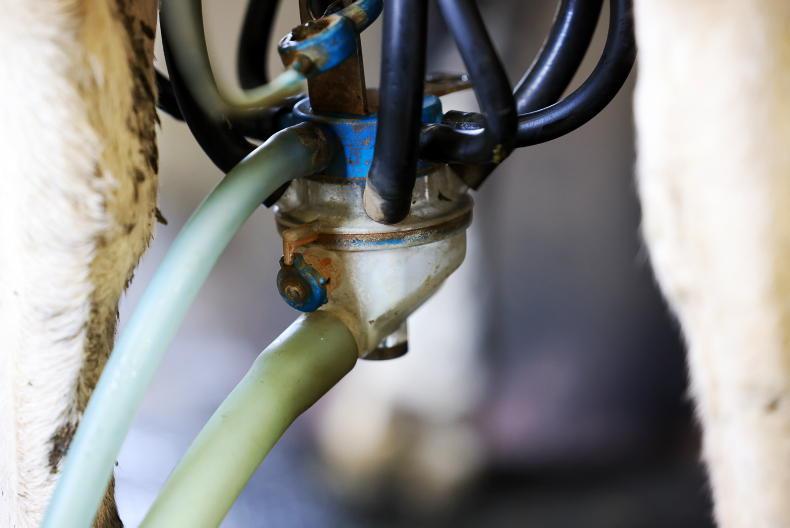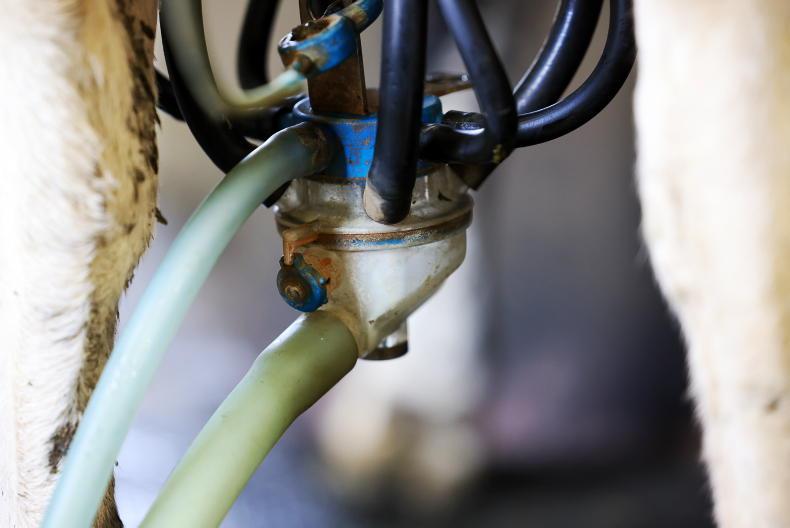When farmers think of storage, much of their attention is diverted to slurry or fodder storage due to the long periods in which these have to be stored.
The storage for the most precious commodity on dairy farms, milk, can be left on the back foot.
As many herds have expanded in numbers post-quota, milking facilities have also been updated for planned larger cow numbers.
However, on some farms that have increased cow numbers more modestly, improved breeding and management over a number of years leading to increased cow yields might mean storage facilities are now coming under pressure.
To calculate the capacity of the bulk tank you require, you firstly need to know how many milkings you need to store at peak.
Farmers who operate on a two-day collection (E2D) require five milkings of storage, with those operating on three-day collections (E3D) requiring seven milkings of storage.
Cow numbers and cow yield are major factors in bulk tank size.
Crossbred herds working off lower milk volumes than Holstein-based herds have an obvious lower storage requirement per cow.
Herds with high numbers of first- and second-calvers might now have a low requirement, but a higher storage requirement will be necessary as the herd matures and yields increase without necessarily going up in cow numbers.
Farmers should look at the potential of their herd, alongside the potential of their farm, in calculating the necessary milk storage facilities, with the best option being to overestimate rather than underestimate.
Example
Herd size: 100 cows/30 litres/day at peak. Bulk tank capacity for E2D: 100 x 30 x 2.5 = 7,500 litres.Bulk tank capacity for E3D: 100 x 30 x 3.5 = 10,500 litres.Milk cooling
A variety of cooling options are available for bulk tanks, with supply of power and water being the main dictators of what system will suit your farm.
Milk cooling can account for up to 40 % of the farm’s electricity usage, so a high initial investment on an efficient cooling option might lead to long-term gain on energy reduction.
When selecting a new bulk tank and cooling system, it is best to enquire about the availability of three-phase power to the farm and the farm’s water supply, be it from an on-farm well, mains water or a private water scheme.
With rising electricity costs, farmers should look at pre-cooling options closely, along with the option of using night-rate electricity, with rates typically half that of daytime rates.
Coolers or plate heat exchangers (PHE) can reduce milk cooling costs by half by bringing milk temperature to within 1°C to 2°C of water temperature before entering the bulk tank.

PHEs/plate coolers have the ability to reduce milk cooling costs by 50%, provided they are correctly calibrated.
A minimum 1:2 ratio of milk and water is required for PHE, with a constant supply of water through large-diameter pipes required during milking.
Studies carried out by Teagasc Moorepark concluded that extra plates have a mild effect on the performance of a PHE in comparison to the milk-water ratio.
Therefore, a poor water supply will not be compensated for by a larger number of plates.
Many farmers are now installing solenoid-controlled valves on plate coolers that turn on the water supply when the milk pump starts and then turn off the supply a few seconds after the milk pump stops.
For farms operating on a single-phase supply, ice bank cooling machines may need to be explored.
These are generally less energy-efficient on a kWh basis, but avail of the nighttime rate.
There is no charge to install a night-rate meter from the ESB.
When farmers think of storage, much of their attention is diverted to slurry or fodder storage due to the long periods in which these have to be stored.
The storage for the most precious commodity on dairy farms, milk, can be left on the back foot.
As many herds have expanded in numbers post-quota, milking facilities have also been updated for planned larger cow numbers.
However, on some farms that have increased cow numbers more modestly, improved breeding and management over a number of years leading to increased cow yields might mean storage facilities are now coming under pressure.
To calculate the capacity of the bulk tank you require, you firstly need to know how many milkings you need to store at peak.
Farmers who operate on a two-day collection (E2D) require five milkings of storage, with those operating on three-day collections (E3D) requiring seven milkings of storage.
Cow numbers and cow yield are major factors in bulk tank size.
Crossbred herds working off lower milk volumes than Holstein-based herds have an obvious lower storage requirement per cow.
Herds with high numbers of first- and second-calvers might now have a low requirement, but a higher storage requirement will be necessary as the herd matures and yields increase without necessarily going up in cow numbers.
Farmers should look at the potential of their herd, alongside the potential of their farm, in calculating the necessary milk storage facilities, with the best option being to overestimate rather than underestimate.
Example
Herd size: 100 cows/30 litres/day at peak. Bulk tank capacity for E2D: 100 x 30 x 2.5 = 7,500 litres.Bulk tank capacity for E3D: 100 x 30 x 3.5 = 10,500 litres.Milk cooling
A variety of cooling options are available for bulk tanks, with supply of power and water being the main dictators of what system will suit your farm.
Milk cooling can account for up to 40 % of the farm’s electricity usage, so a high initial investment on an efficient cooling option might lead to long-term gain on energy reduction.
When selecting a new bulk tank and cooling system, it is best to enquire about the availability of three-phase power to the farm and the farm’s water supply, be it from an on-farm well, mains water or a private water scheme.
With rising electricity costs, farmers should look at pre-cooling options closely, along with the option of using night-rate electricity, with rates typically half that of daytime rates.
Coolers or plate heat exchangers (PHE) can reduce milk cooling costs by half by bringing milk temperature to within 1°C to 2°C of water temperature before entering the bulk tank.

PHEs/plate coolers have the ability to reduce milk cooling costs by 50%, provided they are correctly calibrated.
A minimum 1:2 ratio of milk and water is required for PHE, with a constant supply of water through large-diameter pipes required during milking.
Studies carried out by Teagasc Moorepark concluded that extra plates have a mild effect on the performance of a PHE in comparison to the milk-water ratio.
Therefore, a poor water supply will not be compensated for by a larger number of plates.
Many farmers are now installing solenoid-controlled valves on plate coolers that turn on the water supply when the milk pump starts and then turn off the supply a few seconds after the milk pump stops.
For farms operating on a single-phase supply, ice bank cooling machines may need to be explored.
These are generally less energy-efficient on a kWh basis, but avail of the nighttime rate.
There is no charge to install a night-rate meter from the ESB.










SHARING OPTIONS